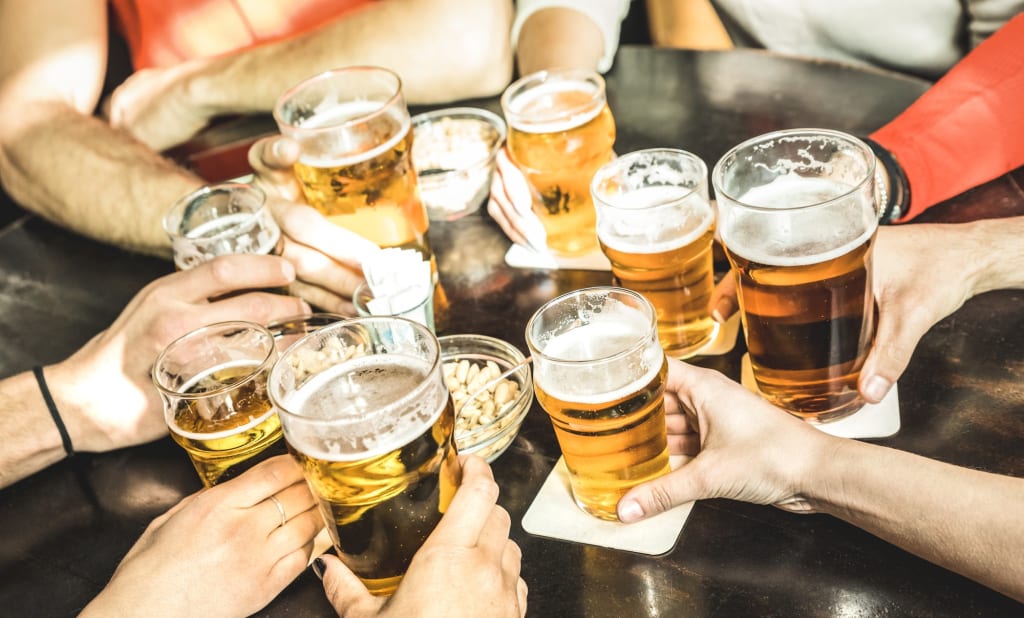The Art and Science of Beer
A Look into the Brewing Process and the Science behind Your Favorite Beverage

Beer has been a popular beverage for thousands of years, enjoyed by people all over the world. But have you ever stopped to consider the science behind the brewing process and what makes your favorite beer taste so good? In this article, we'll take a deep dive into the art and science of beer, from the brewing process to the chemistry behind the flavors and aromas.
The Brewing Process
The brewing process can be broken down into several key steps, each of which plays a crucial role in creating the final product. These steps include:
Malting: The first step in the brewing process is malting, where grains such as barley are soaked in water and allowed to germinate. This process activates enzymes in the grains that break down the starches into fermentable sugars.
Mashing: The next step is mashing, where the malted grains are combined with hot water to create a mash. This process releases the fermentable sugars and creates a sweet liquid known as wort.
Boiling: The wort is then boiled with hops, which add bitterness and aroma to the beer. Boiling also sterilizes the wort and helps to extract flavors from the hops.
Fermentation: After boiling, the wort is cooled and yeast is added. The yeast consumes the fermentable sugars, producing alcohol and carbon dioxide.
Conditioning: Finally, the beer is conditioned, where it is aged and carbonated before being bottled or kegged for consumption.
The Science behind the Flavor and Aroma of Beer
The flavor and aroma of beer are complex and influenced by a variety of factors, including the ingredients, the brewing process, and the chemical reactions that occur during fermentation. Here are some of the key elements that contribute to the flavor and aroma of beer:
Hops: Hops are a key ingredient in beer and contribute to its bitterness, aroma, and flavor. Different varieties of hops have different flavors and aromas, ranging from floral and spicy to earthy and citrusy.
Yeast: Yeast plays a critical role in the fermentation process and can significantly impact the flavor and aroma of beer. Different strains of yeast produce different flavors and aromas, such as fruity or spicy notes.
Malts: The type of malt used in brewing can also impact the flavor and aroma of beer. Roasted malts, for example, can add chocolate or coffee notes, while caramel malts can add sweetness and complexity.
Water: The composition of the water used in brewing can also affect the flavor of beer. Hard water, which contains high levels of minerals such as calcium and magnesium, can enhance the bitterness of hops, while soft water can create a smoother and less bitter beer.
Chemical Reactions: The brewing process involves a variety of chemical reactions that can contribute to the flavor and aroma of beer. For example, the Maillard reaction occurs during the boiling process and produces flavors and aromas such as caramel and toast.
Conclusion
Beer is more than just a refreshing beverage – it's a complex and fascinating subject that combines art and science. Understanding the brewing process and the science behind the flavors and aromas can deepen your appreciation for this beloved drink. Whether you're a beer enthusiast or simply enjoy the occasional pint, taking the time to learn about the art and science of beer can enhance your drinking experience and help you discover new flavors and styles to enjoy. So next time you crack open a cold one, take a moment to savor the flavors and appreciate the complex processes that went into creating it. Cheers!
About the Creator
Enjoyed the story? Support the Creator.
Subscribe for free to receive all their stories in your feed. You could also pledge your support or give them a one-off tip, letting them know you appreciate their work.





Comments
There are no comments for this story
Be the first to respond and start the conversation.